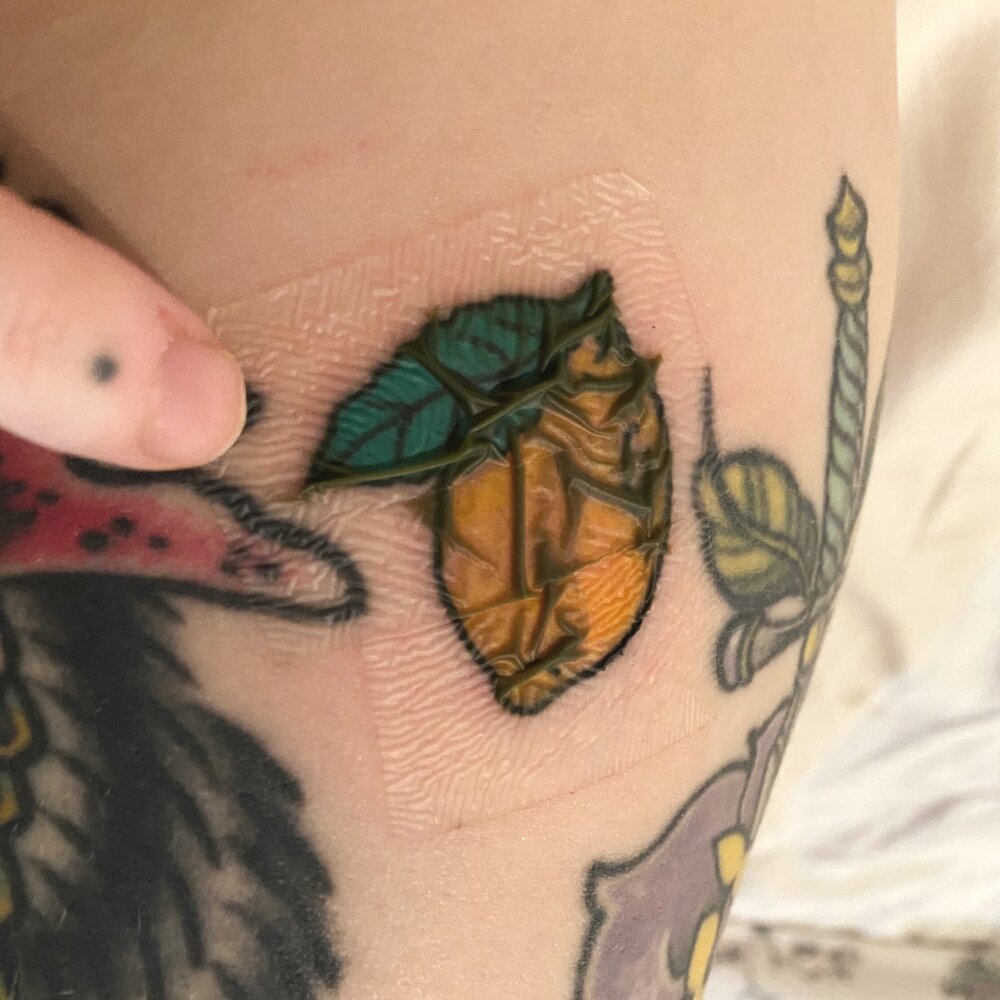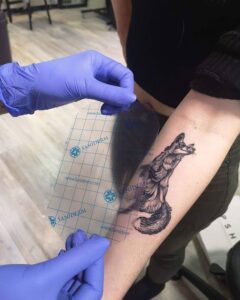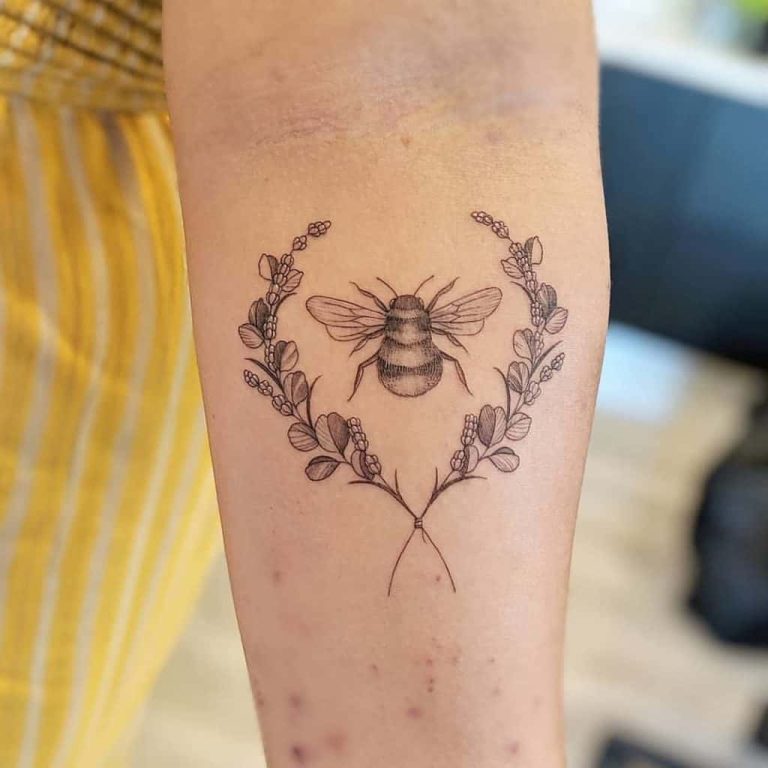Last Updated on January 1, 2025 by Sheila R. Wright
Saniderm is a tattoo aftercare product that is applied over the tattooed area. It forms a barrier between the tattoo and the outside world, allowing the tattoo to heal while keeping it protected. You can shower with Saniderm on a tattoo, but you need to be careful not to get the dressing wet.
- Start with clean skin by washing your tattooed area with a mild soap and warm water
- This will help to remove any oils or debris that may be on your skin
- Apply a thin layer of Saniderm to the tattooed area
- Make sure to smooth out any wrinkles or air bubbles
- Let the Saniderm adhesive bond to your skin for about 60 seconds before showering
- Gently wash your tattooed area with a mild soap and warm water while in the shower
- Avoid scrubbing or rubbing too vigorously
- Rinse off all of the soap and gently pat dry your tattooed area with a clean towel when you finish showering
How Long After a Tattoo Can You Shower Normally
How Long After a Tattoo Can You Shower Normally?
It is recommended that you wait at least 2-3 hours after your tattoo before showering normally. This gives the ink time to set into your skin and prevents it from being washed away.
However, waiting too long to shower can also be detrimental to your tattoo as it can allow bacteria to build up on your skin and cause an infection. If you are unable to wait the full 2-3 hours, it is important to at least wash the area with mild soap and water (avoiding scrubbing) before patting dry.
Can I Shower With Second Skin on My Tattoo
There’s no need to avoid showering just because you have a new tattoo! In fact, keeping your tattoo clean is an important part of the healing process. Here are a few tips for showering with a new tattoo: -Gently wash your tattoo with soap and water.
Avoid using harsh chemicals or scrubbing too hard. -Let lukewarm water run over your tattoo for a few minutes to loosen any dried plasma or lymph fluid. -Gently pat your tattoo dry with a clean towel.
Don’t rub it dry! -Apply a thin layer of moisture-locking ointment, like A&D ointment or Aquaphor Healing Ointment.
Saniderm Ruined My Tattoo
If you’ve ever had a bad reaction to a new tattoo, you’re not alone. In fact, it’s quite common. The most likely culprit is an allergy to the ink or latex in the bandage.
But sometimes, people have reactions to the adhesive in bandages, too.
One woman recently took to Reddit to share her story of how a Saniderm bandage ruined her tattoo. She said she’d only had the tattoo for two days when she decided to switch out her old bandage for a Saniderm.
Almost immediately, she started having an allergic reaction.
“I started getting red welts all over my arm,” she wrote. “They were itchy and swollen and just looked terrible.”
She went back to her tattoo artist, who told her that she was probably allergic to the adhesive in the bandage and that she should stop using it immediately. She did as he advised and within a few days, her symptoms had gone away.
While this woman’s story is certainly alarming, it’s important to remember that allergies are fairly common and that they can happen with any type of product – not just tattoos or bandages.
If you suspect you might be allergic to something, it’s always best to err on the side of caution and stop using the product right away.
Can You Shower With a Tattoo Wrap on
A tattoo wrap is a great way to keep your tattoo clean and protected while you shower. However, there are a few things you need to know before you shower with a tattoo wrap on. First, make sure the wrap is secure and snug against your skin.
If it isn’t, water can seep in and cause the ink to run or smear. Second, avoid using soap directly on the tattoo wrap. Instead, wash around it with a mild cleanser.
Soap can dry out the tattoo and irritate the skin underneath. Finally, be sure to pat the tattoo dry after your shower – do not rub! Rubbing can damage delicate new skin cells and cause irritation.
If you follow these simple guidelines, you can safely shower with a tattoo wrap on without harming your new ink!
How Long After a Tattoo Can You Wash It With Soap
If you just got a tattoo, you may be wondering how long you have to wait before washing it with soap. The answer depends on a few factors, including the type of ink used and the depth of the tattoo. Here’s what you need to know about washing your new tattoo with soap.
Most tattoos take about two weeks to heal fully. During this time, it’s important to keep the area clean and free from bacteria. You should wash your tattoo several times a day with plain water and a gentle cleanser like unscented soap.
Avoid scrubbing or using harsh chemicals, which can irritate the skin and delay healing.
After two weeks, you can start using antibacterial soap when washing your tattoo. Be sure to use a mild formula that won’t dry out your skin.
A good rule of thumb is to wash your tattoo with soap no more than twice a day.
If your tattoo starts to itch or peel, don’t scratch it! This can damage the skin and cause infection.
Instead, apply a light layer of lotion or ointment to help soothe the skin.

Credit: www.lhayton.com
When Can I Shower After a Tattoo With Saniderm?
Saniderm is a medical grade adhesive bandage that is specifically designed for tattoos. It creates a barrier between your tattoo and the outside world, allowing your tattoo to heal properly while keeping it protected from infection.
So, when can you shower after a tattoo with Saniderm?
The answer is 24 hours. Once you have applied Saniderm to your tattoo, you should wait 24 hours before showering or swimming. This will give the adhesive time to bond with your skin and create a waterproof seal.
After 24 hours, you can safely shower or swim without worry of damaging your tattoo or causing an infection.
What If Water Gets under My Saniderm?
If water gets under your Saniderm, it could cause the tattoo to blister and potentially become infected. To avoid this, make sure to keep the area clean and dry. You can also try using a bandage or wrap over top of the Saniderm to help keep water out.
What Should You Not Do With Saniderm?
Saniderm is a medical adhesive bandage that is used to promote healing and protect wounds. It is important to note that Saniderm should not be used on open or bleeding wounds, as it can cause further irritation and delay healing. Additionally, Saniderm should not be used on areas of the skin that are sunburned, broken, or have any other type of skin injury.
If you have any questions about whether or not Saniderm is right for your wound, please consult with a medical professional.
How Do You Shower With a Healing Tattoo?
After you get a tattoo, it’s important to keep the area clean and dry. This is especially true for the first week or so after getting your tattoo. During this time, you should avoid taking long baths or showers, as this can lead to irritation and even infection.
Instead, opt for quick showers using lukewarm water and mild soap.
Be sure to gently pat your tattoo dry after showering. Avoid scrubbing or rubbing the area, as this can also cause irritation.
Once your tattoo is fully healed, you can return to your normal showering habits. Just be sure to avoid using any harsh chemicals or abrasive materials on your tattoo.
How to “PROPERLY” USE SANIDERM on a NEW TAT
Conclusion
Saniderm is a clear adhesive bandage that is applied over newly tattooed skin. It acts as a second skin, protecting the tattoo from external irritants and allowing it to heal properly. Many people wonder if they can shower with Saniderm on their tattoo, and the answer is yes!
In fact, showering can actually be beneficial for healing tattoos covered in Saniderm. The water will keep the tattoo hydrated and help to remove any scabs or dead skin cells that may have formed. Just be sure to avoid using soap directly on the tattoo, as this can dry out the skin and cause irritation.




